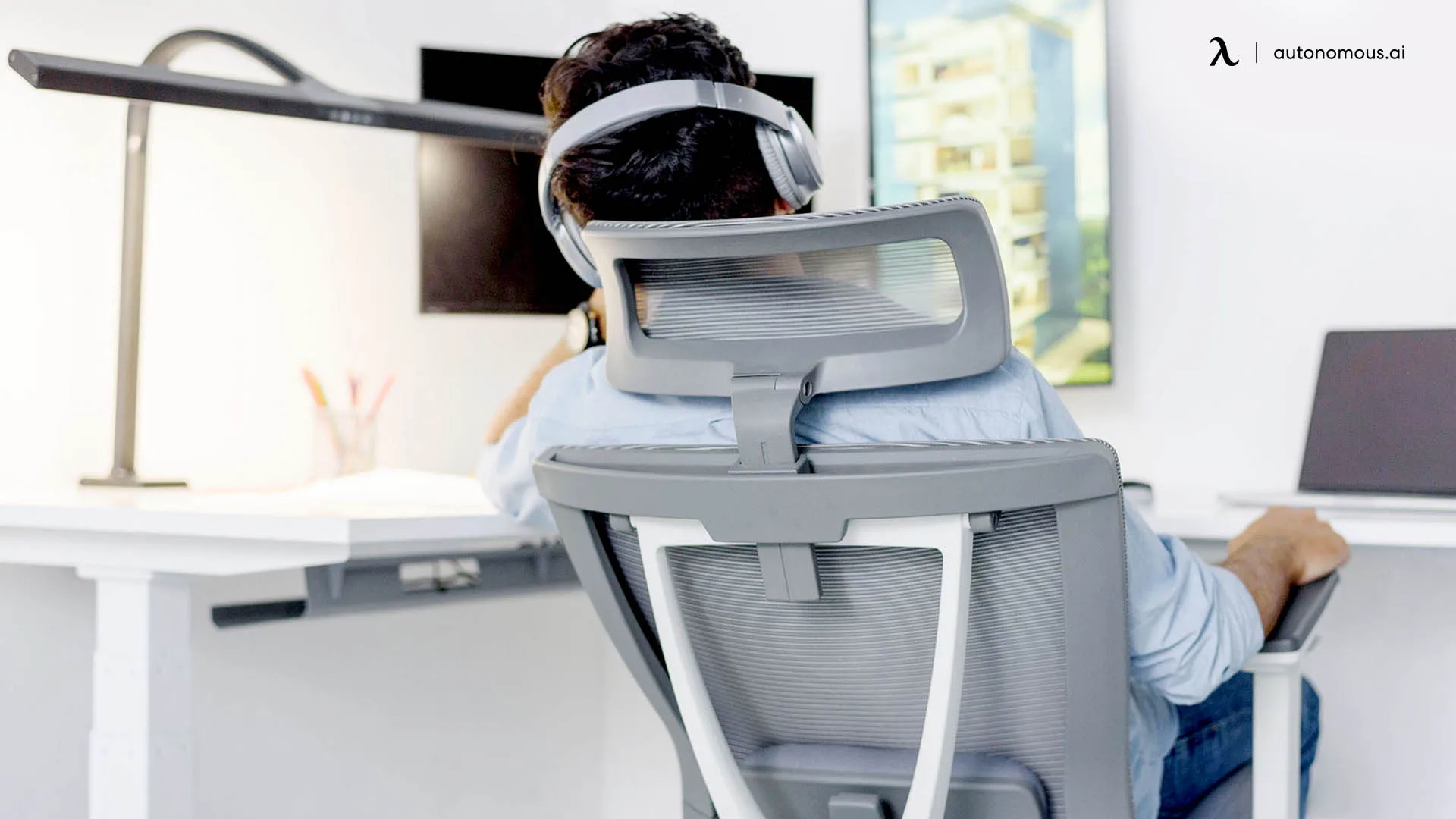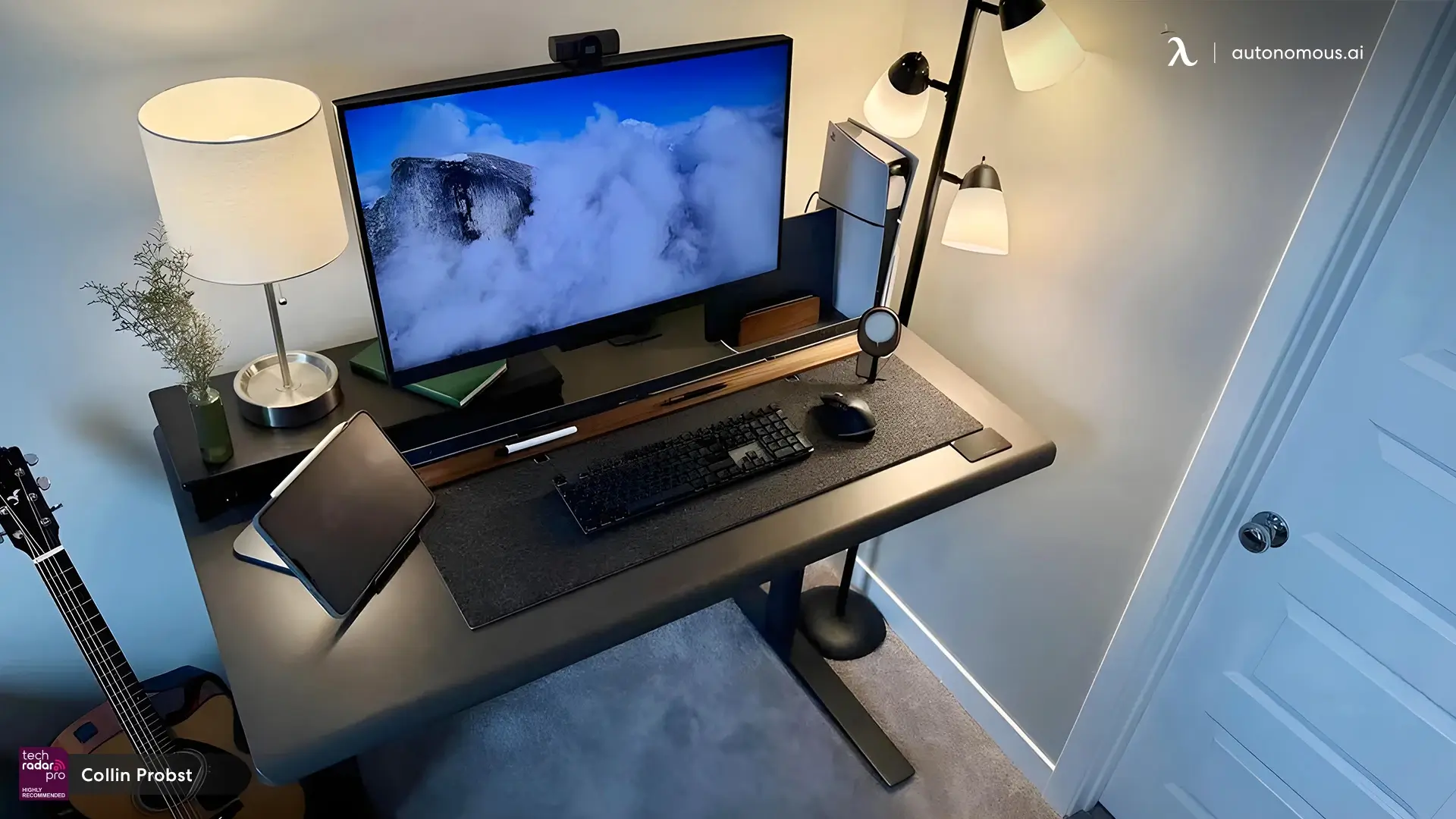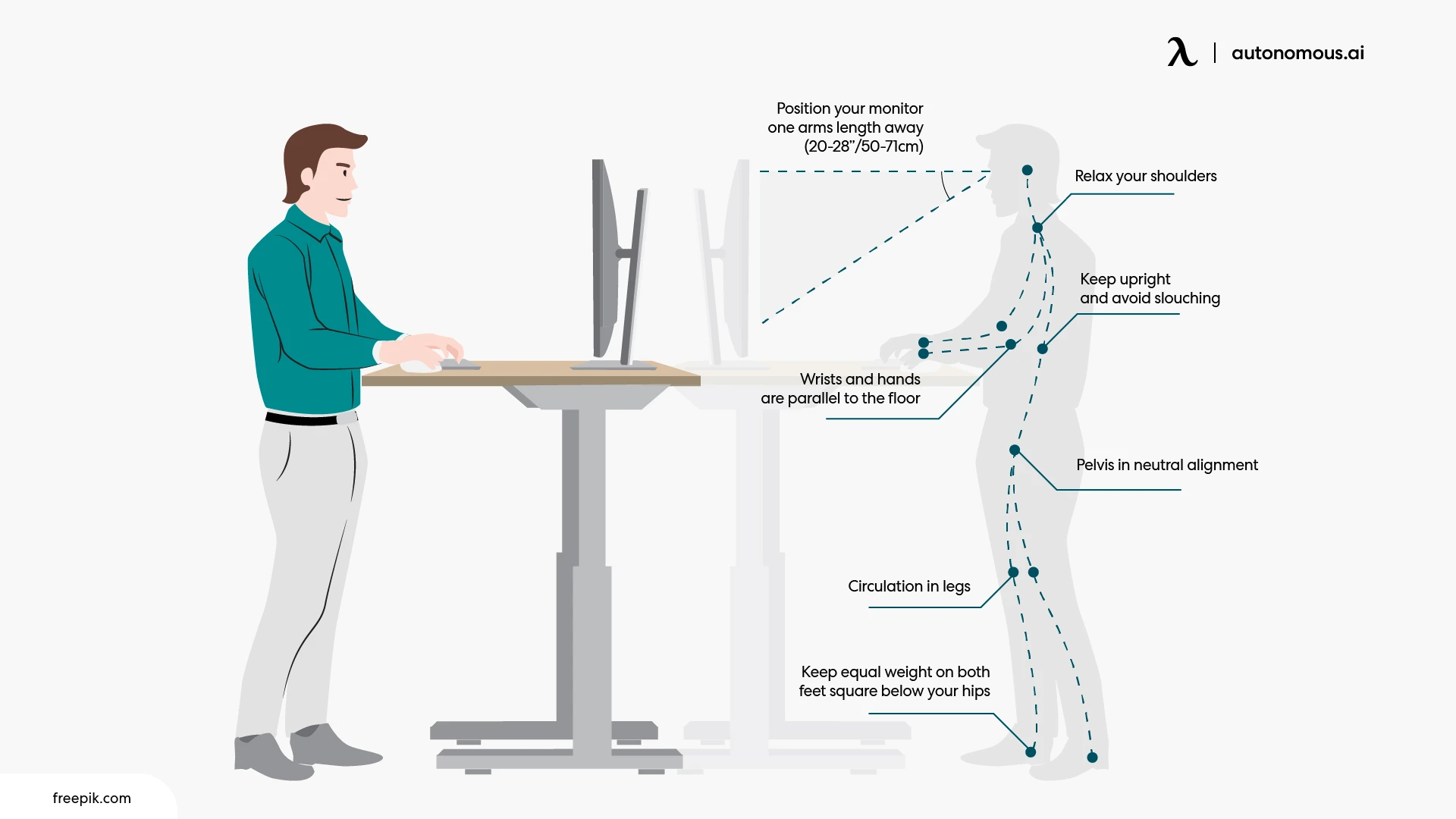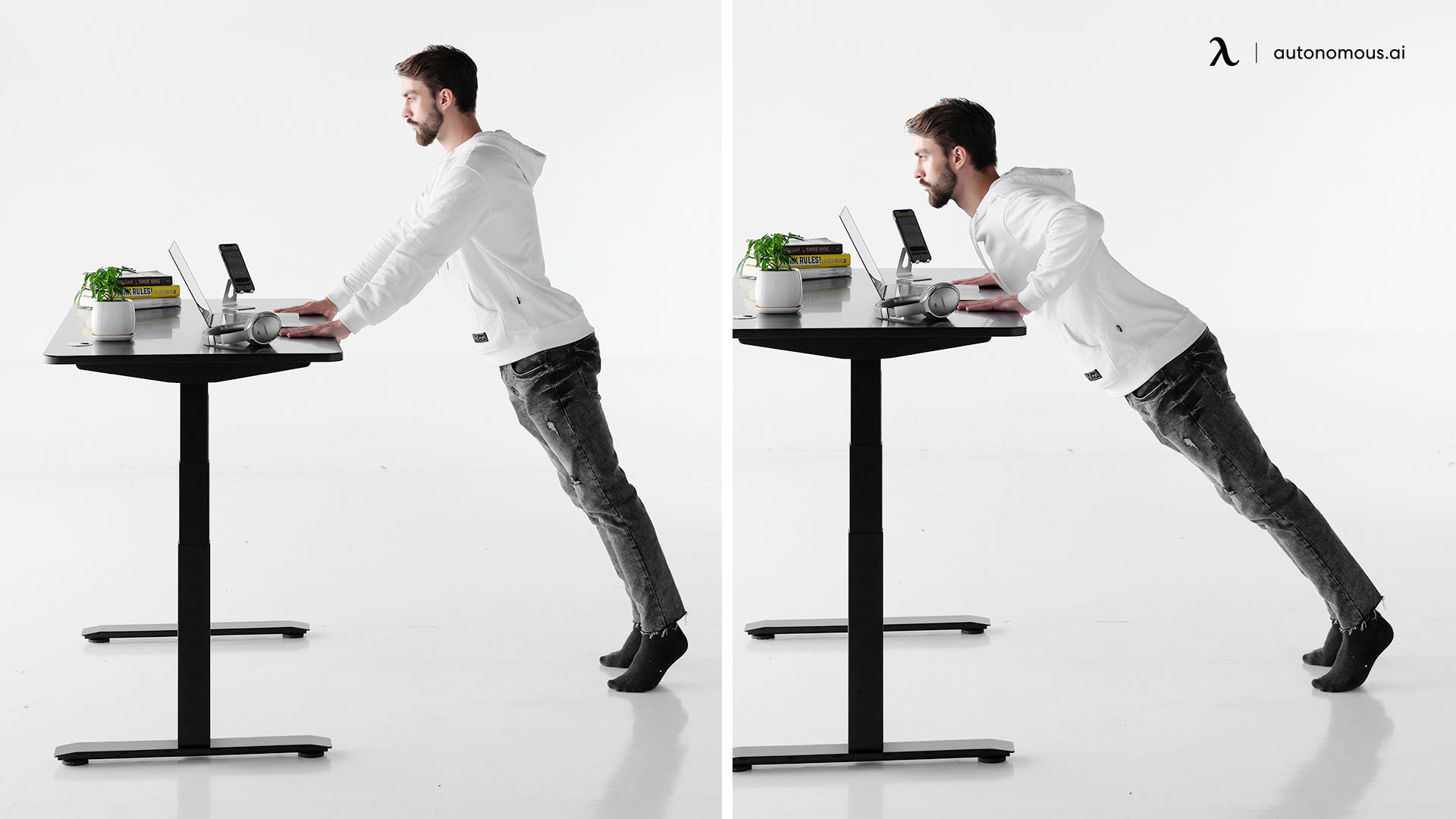
Fix Neck Pain Going Into Shoulder While Working From Home
Table of Contents
In the wake of the COVID-19 pandemic, the world witnessed a seismic shift in work dynamics, with remote work becoming the new norm. This transformation has brought unprecedented flexibility but has also introduced a host of challenges, one of the most common being neck pain going into the shoulder.
As we continue to adapt to this digital age of work, it's crucial to address the physical toll it can take on our bodies.
In this article, we will explore the underlying causes of neck pain extending into the shoulder for remote workers. We will also provide practical solutions and expert insights to help you alleviate discomfort and maintain your well-being while working from home.
What Causes Neck & Shoulder Pain?
Some potential factors contributing to neck pain radiating into the shoulders include:
- Poor Posture
Prolonged poor posture, such as slouching while sitting or hunching over a computer, can strain the muscles and ligaments in the neck and shoulders. This strain can result in neck pain radiating into shoulder blades as the muscles work harder to support the head and upper body. Over time, it may lead to muscle imbalances and chronic discomfort.
- Muscle Tension
Muscle tension in the neck and shoulders can be caused by stress, anxiety, or overuse of these muscles. Stress and anxiety can lead to the tightening of muscles, which can result in stiffness and pain. Overuse, often seen in activities like lifting heavy objects or carrying heavy bags, can lead to muscle fatigue and neck pain in shoulder blades.
- Herniated Discs
Vertebral discs are what function as shock absorbers in the spine. When a disc's supple interior pushes through its hard exterior and puts pressure on adjacent nerves, the condition is known as a herniated disc. If the damaged disc is in the neck (cervical spine), it might lead to tingling, numbness, and neck pain in between shoulder blades.
- Pinched Nerves
Pinched nerves in the neck, medically known as cervical radiculopathy, occur when nerves in the cervical spine become compressed or irritated. This compression can result from conditions like herniated discs, bone spurs, or even muscle inflammation. Pinched nerves often cause sharp, shooting pain that can extend into the shoulders, along with weakness and numbness in the arm.
- Arthritis
Arthritis can affect the neck and shoulder joints. Osteoarthritis, the most common type, involves the degeneration of joint cartilage, leading to pain, stiffness, and reduced mobility. Rheumatoid arthritis, an autoimmune condition, can cause inflammation in these joints, contributing to pain and discomfort.
- Trauma/Injury
Physical trauma or injury to the neck and shoulders can result from accidents, falls, or sports-related activities. Such incidents can cause sprains, strains, fractures, or even dislocations, leading to acute pain and potential long-term issues if not properly treated.
- Repetitive Strain
Repetitive movements or poor ergonomics in daily activities or work can lead to overuse injuries. For example, individuals who perform repetitive tasks like typing for extended periods may develop conditions like carpal tunnel syndrome or shoulder impingement, leading to chronic pain in the neck and shoulders.
If your symptoms began after a collision, fall, or other traumatic event, address the medical issues first but also consider your rights. When another party's negligence contributed to your injury, a personal injury attorney can help you understand potential claims, preserve evidence, and handle insurers while you focus on treatment.
- Poor Sleep
Sleeping in an improper position or on an unsupportive mattress can strain the neck and shoulder muscles. Waking up with a stiff or sore neck and shoulders is a common symptom of poor sleep posture, and it can result in discomfort during the day.
Top 10 Solutions for Office Workers
If you spend most of your day working at a desk, neck pain can quickly become part of your daily routine. Poor posture, awkward screen angles, and long hours sitting still can all strain your neck and shoulders. The good news is that small changes can make a big difference. Below are ten practical remedies to help relieve neck pain and prevent it from coming back.
1. Ergonomic Workspace Setup
Your workspace setup plays the biggest role in preventing and relieving neck pain. A poor desk height, unsupportive chair, or awkward screen placement can put continuous strain on your neck and shoulders. Creating an ergonomic workspace means designing a setup that supports the body’s natural posture and allows you to move freely throughout the day.
Start by upgrading your main foundation — the desk. A standing desk helps you switch between sitting and standing, promoting better posture and circulation. If you’re not sure where to start, check out this guide to determine the ideal standing desk height and compare it with the average desk height used in most offices. For precise adjustments, you can even use the standing desk height calculator to customize your setup to your height and monitor level.
Standing while working can reduce pressure on your spine and boost energy levels, but like any habit, it takes time to get used to. This article on standing desk tips shares practical ways to ease into it. If you’re still wondering whether switching to a sit-stand setup is worth the investment, explore the true health benefits of a standing desk.
Next, consider the chair you’re spending hours in every day. A proper ergonomic chair provides adjustable lumbar support, seat height, and armrests to keep your posture aligned. For those with chronic back discomfort, options like the best office chair for a bad back can make a world of difference. You can also explore office chairs with headrest for added neck support, especially useful during long meetings or focused sessions.
If you prefer a more dynamic setup, pair your desk with a standing desk stool. It encourages micro-movements and keeps your core engaged, which helps relieve pressure from prolonged sitting. Over time, the right combination of a height-adjustable desk, ergonomic chair, and active stool can create a workspace that minimizes strain and keeps you naturally aligned.

Autonomous Desk 5
| Dimensions | 53"L x 29"W x 1.2"H |
|---|---|
| Colors | Stone Desert, Titanium White, Meteor Grey |
| Coating | Special customize sealing paint based on Green Standard |
| Material | HDF wood |
| Motor type | Dual |
|---|---|
| Lifting speed | 1.2”/sec |
| Lifting capacity | 330 lbs |
| Noise level | 40 dB |
| Height range (without top) | 29.5" - 48.5" |
| Height range (with top) | 30.7" - 49.7" |
| Length range | 40.4" - 70.9" |
| Frame foot width | 26.4" |
| Material | SPCC steel |
| Colors | Stone Desert, Titanium White, Meteor Grey |
| Outlet voltage | 110-240V |
| Anti - collision | Yes |
| Motor type | Dual |
|---|---|
| Lifting speed | 1.6”/sec |
| Lifting capacity | 330 lbs |
| Noise level | 40 dB |
| Height range (without top) | 26" - 51.5" |
| Height range (with top) | 27.2" - 52.7" |
| Length range | 40.4" - 70.9" |
| Frame foot width | 26.4" |
| Material | SPCC steel |
| Colors | Stone Desert, Titanium White, Meteor Grey |
| Outlet voltage | 110-240V |
| Anti - collision | Yes |

Autonomous ErgoChair Pro
| Dimensions | 29”L x 29”W x 46” - 50”H |
|---|---|
| Seat dimensions | 20”L x 20”W |
| Seat height | 18” - 20” |
| Back dimensions (w/o headrest) | 21”W x 22”H |
| Back dimensions (with headrest) | 21”W x 28” - 31”H |
| Tilt range | 22° |
| Armrest height | 11” - 14” |
| Armrest height (from the floor) | 26.7” - 32.2” |
| Caster wheel diameter | 2.36 inches |
| Number of caster wheels | 5 pieces |
| Materials | Polyester fabric with molded foam interior and durable nylon plastic frame; PU handrest pads. |
| Colors | Cool Gray, Evergreen, All Black Red Apple, Black & White, Baby Blue |
| Weight capacity | 300 lbs |
| Item weight | 48.5 lbs |
| Shipping dimensions | 29”L x 27”W x 19”H x 67 lbs |
| Assembly required | Yes |
| Warranty | 2 years |
| Free returns | 30 days The trial and return policy does NOT apply to products on sale. |
| Adjustability | Headrest, armrest, back tilt angle and tension, seat tilt and height. |
| Pros | Cons |
| 9 adjustable points, including headrest, armrests, and seat height, ensure personalized comfort. | Assembly required: May be challenging for some users. |
| Synchro-tilt mechanism: Reclines at a 2-to-1 ratio for balanced lower back and leg support. | Weighs 48.5 lbs, making it harder to move. |
| Breathable mesh: Prevents overheating, keeping you cool and focused. | |
| Flexible lumbar cushion: Adapts to your spine's curve, reducing pain and stiffness. | |
| Available in multiple stylish colors. | |
| Supports up to 300 lbs with a durable nylon plastic frame. |
.webp)
Autonomous ErgoStool
| Dimensions | 13”L x 13”W x 25” - 35”H |
|---|---|
| Seat dimensions | 13”L x 13”W |
| Seat height | 25” - 35” |
| Range of motion | 30° |
| Adjustability | Seat height |
| Materials | Polyester fabric with molded foam interior and durable nylon plastic frame. |
| Certification | UL 2818 - 2013 Gold Standard for Chemical Emissions for Building Materials, Finishes and Furnishings. |
| Colors | Navy Blue, All Black, Cool Gray, Evergreen |
| Weight capacity | 270 lbs |
| Item weight | 22 lbs |
| Shipping dimensions | 53”L x 37.5”W x 33”H x 26 lbs |
2. Regular Posture Checks
Even if you have the perfect desk and chair setup, posture can slip over time — especially during long work hours. That’s why taking regular breaks to stand up, stretch, and check your alignment is essential. Roll your shoulders back, unclench your jaw, and make sure your head isn’t leaning forward toward the screen. These short posture checks prevent stiffness and ease muscle tension before it builds up.
Sitting in a posture office chair can also help reinforce healthy habits. These chairs are designed to support your spine’s natural curve, reducing pressure on your neck and shoulders. Beyond the chair, understanding proper posture at desk is crucial — your feet should rest flat on the floor, your knees at a 90-degree angle, and your eyes aligned with the top third of your monitor.
Everyone sits differently, and not all postures are ideal. Learning about the types of sitting can help you identify whether you tend to slouch, lean forward, or arch your back excessively. Awareness is the first step to correction. If you notice yourself craning toward the screen, this guide on forward leaning posture offers tips to bring your head and shoulders back into alignment. For those who struggle with rounded shoulders or an exaggerated curve in the upper back, read about how to overcome stooped posture through mindful movement and strengthening exercises.

3. Monitor Your Screen Time
The way you position your screen has a direct impact on your neck and shoulder health. If it’s placed too high, too low, or too close, your body naturally compensates by leaning forward or tilting your head. Finding the right viewing distance — as explained in the how far should monitor be from face standard — helps keep your posture neutral and your neck relaxed during long working hours.
Aside from placement, the total number of hours you spend in front of screens matters just as much. The average screen time for adults has steadily increased over the years, leading to more frequent cases of digital fatigue and neck stiffness. Setting screen-time limits, practicing short breaks every hour, and occasionally standing while working can help offset these effects.
A simple change in your monitor distance and daily viewing habits can go a long way toward easing tension and improving comfort throughout the workday.

4. Stretching Exercises
Regular movement throughout the day is one of the simplest and most effective ways to relieve neck and back tension. When you sit for hours, your muscles tighten, circulation slows, and your posture gradually collapses forward. Adding quick stretches between tasks helps loosen those muscles and keeps your body energized.
You can start with seated stretches right at your desk — gentle twists, shoulder rolls, and neck tilts that relax your upper body without interrupting work. If you use a height-adjustable desk, incorporating standing desk exercises can bring even more relief. Alternating between sitting and standing positions engages different muscle groups and prevents stiffness from setting in.
To improve balance and posture over time, try a balance board workout. Standing on a balance board while working activates your core and stabilizing muscles, which helps support your neck and spine naturally. For deeper muscle release, especially after long hours of sitting, add a few standing back stretches to open up your shoulders and ease pressure in the lower back.
Just five minutes of stretching several times a day can make a noticeable difference — reducing pain, improving flexibility, and keeping your posture in check long after you’ve left your desk.

5. Strengthen Neck and Shoulder Muscles
Weak muscles around the neck and shoulders make it harder to maintain good posture for long periods. Strengthening these areas provides stability and helps your spine stay in a neutral, comfortable position throughout the day. Simple neck posture exercises — such as chin tucks, gentle resistance training, and shoulder blade squeezes — can go a long way toward easing pain and improving alignment.
It’s also helpful to vary your sitting positions during the workday. Switching between upright and reclined postures allows your muscles to rest and recover. A properly adjusted reclining position supports your spine and distributes pressure evenly, preventing fatigue in your neck and shoulders. Small shifts like these can make a big difference in how your body feels by the end of the day.

6. Phone Usage
It’s easy to overlook how phone habits contribute to neck pain. Tilting your head down while scrolling or holding your phone between your ear and shoulder adds unnecessary strain to your neck muscles. Over time, this “text neck” posture can lead to chronic tension and discomfort. Avoid cradling your phone — instead, use a headset or speakerphone for calls and keep your device at eye level whenever possible. These small changes reduce pressure and help maintain better alignment during everyday activities.
7. Regular Massage or Physical Therapy
Muscle tension and stiffness don’t always go away on their own. Incorporating regular massage or physical therapy sessions into your routine can help correct imbalances and release tightness caused by prolonged sitting. A trained therapist can identify pressure points and weak areas contributing to your neck pain, then apply targeted treatment to restore flexibility and comfort.
If you prefer at-home relief, you can replicate some of these benefits by using one of the best recliners for neck pain to gently massage and support your upper body. Even 15–20 minutes of relaxation each evening can reduce soreness and prepare your muscles for the next day.
Frequently Asked Questions
When should I seek medical attention for neck and shoulder pain?
While many cases of neck and shoulder pain can be managed at home, it's essential to seek medical attention under certain circumstances:
- Severe Pain: If your pain is intense and persistent despite self-care efforts, consult a healthcare professional.
- Numbness or Weakness: If you experience numbness, tingling, or weakness in your arms or hands, it could indicate nerve compression, requiring immediate evaluation.
- Recent Injury: If your pain follows a recent injury or accident, such as a fall or car crash, seek medical attention to rule out serious underlying issues.
- Persistent Symptoms: If symptoms persist or worsen over time, consult a healthcare provider to identify the root cause and appropriate treatment options.
Always consult with a healthcare professional for a proper diagnosis and personalized treatment plan if you have concerns about neck pain that radiates into your shoulder.
Can stress and anxiety contribute to neck pain that radiates into the shoulder?
Yes, stress and anxiety can contribute to neck pain that extends into the shoulder. When you're stressed or anxious, your body's natural response is to tense up, including the muscles in your neck and shoulders. This prolonged tension can lead to muscle knots and trigger points, resulting in pain that radiates into the shoulder region. Stress-reduction techniques such as relaxation exercises, deep breathing, and mindfulness meditation can help alleviate both the mental and physical aspects of this pain.
Conclusion
Incorporating the strategies mentioned in this article into your daily routine can make a world of difference in alleviating neck pain while working from home. Prioritize your well-being, and enjoy the benefits of a pain-free, productive remote work experience.
Spread the word
.svg)








